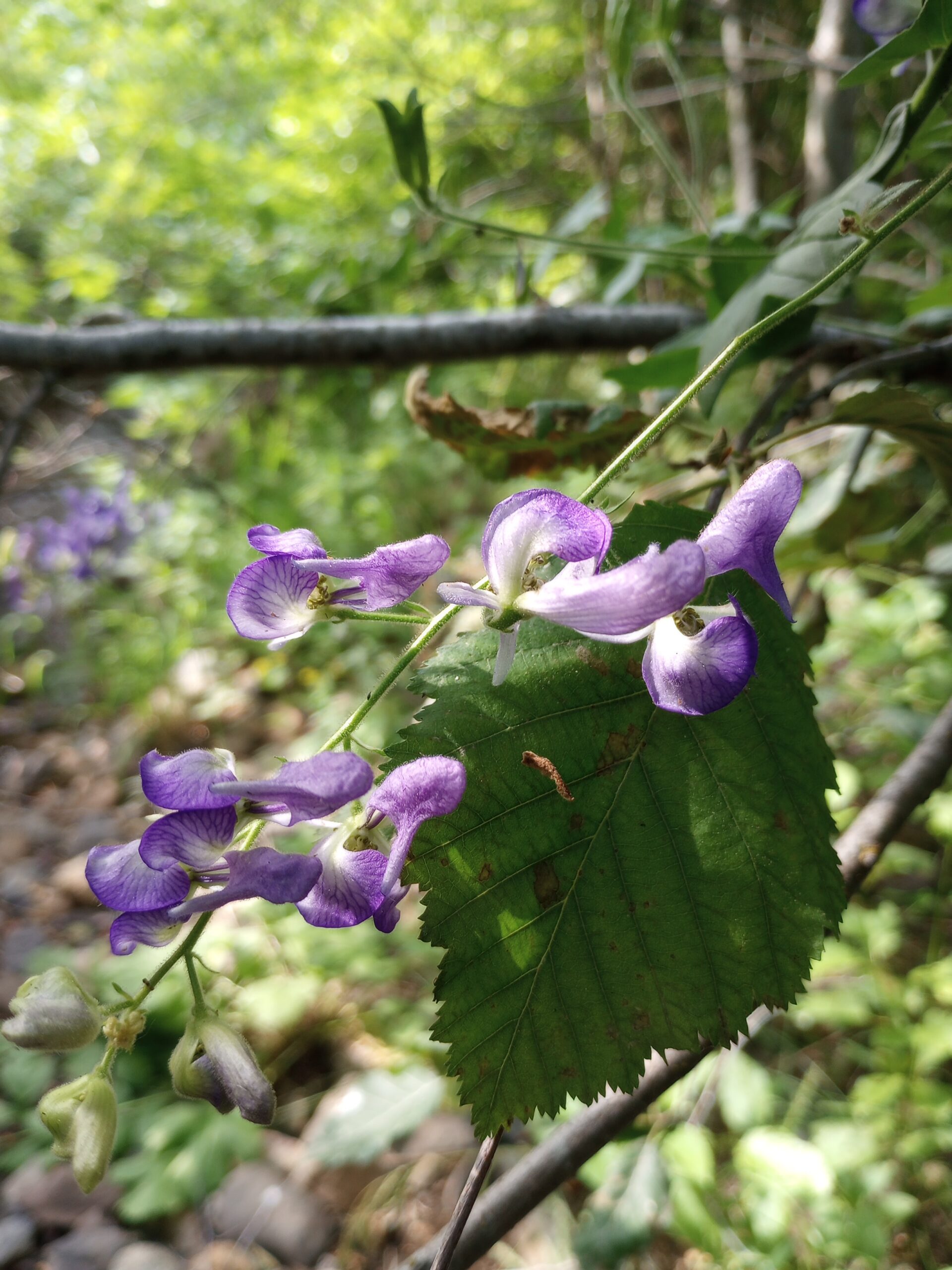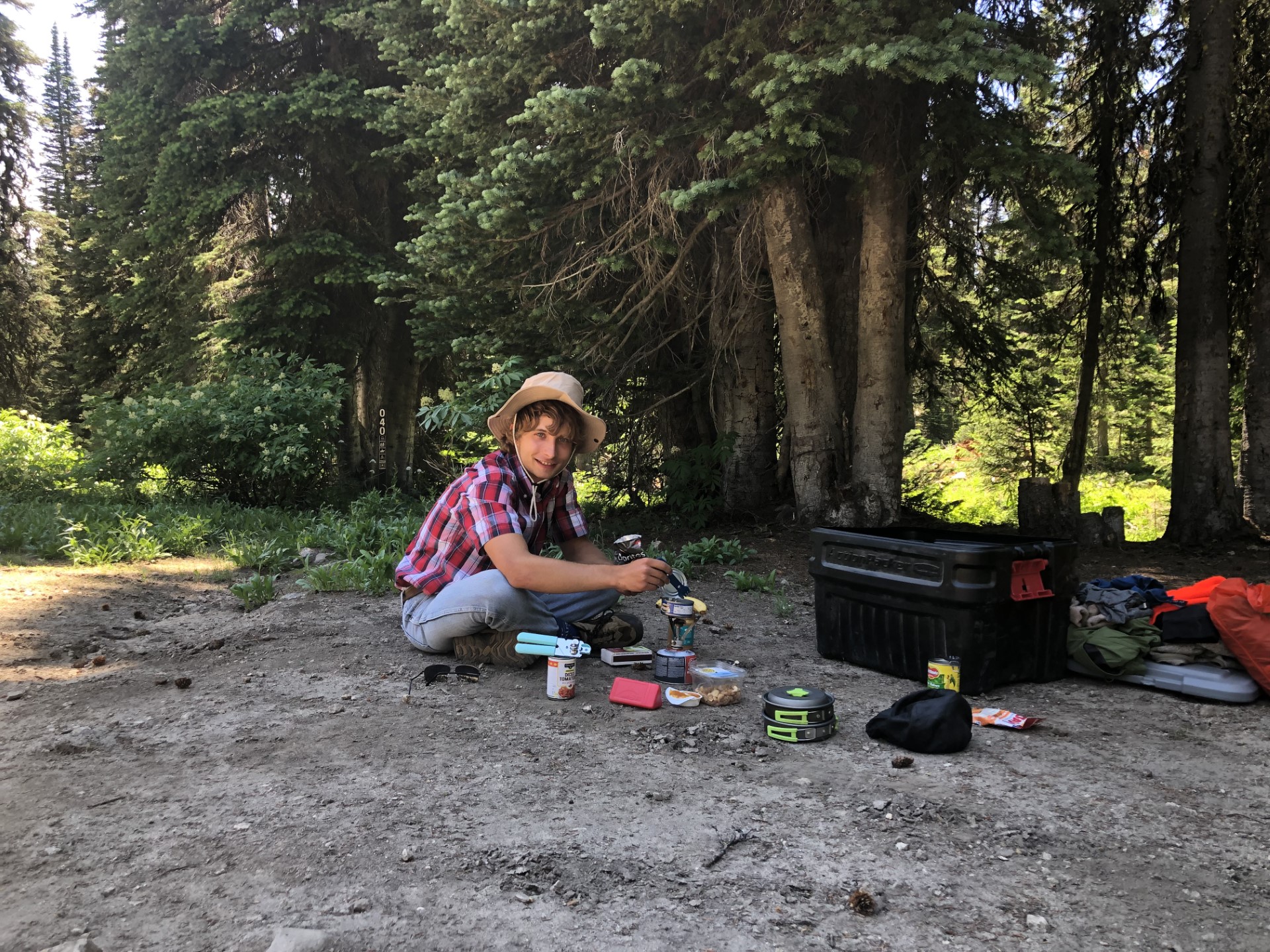By and large, seed collecting here in central Idaho has been going quite well. We’ve picked bags and bags of fleabanes, needlegrass, wheatgrass, and fiddlenecks. The season has been a bit behind so far, but the last few weeks, our plants must have finally heard the wake-up call of summer and decided to finally get in motion. All of a sudden, we went from having no seeds to gather to running all over the forest, trying to keep up with everything!
There are a handful of plants that are still evading us, of course. One of those is Lathyrus lanszwertii, the Nevada pea. We’ve followed a handful of leads for it, all of which turned out to be dead ends – including a half-hour drive on a very bumpy mountain road to be taunted by a patch of Lathyrus pauciflorus, the few-flowered pea. (Guess how much luck we’d have trying to collect 30,000 seeds from that?) And when all you have is a hammer, everything looks like a nail, so Dan and I have been on high alert for anything that vaguely resembles this enigmatic legume. Our curiosity (read: desperation) led us last week into a decent bit of misadventure.
Early Wednesday morning, while scouting for wild mint (Agastache urticifolia), I followed the trail a little farther up the streambank to find a string of brilliant purple flowers growing among the alders. Could this finally be our pea? I hopped over the rocks to pick a flower off and scour our field guide. It had five petals, reflexed backwards, pinnate leaves, a vining growth form – this had to be it. But the stamens grew in a dense, tangled knot around the center of the flower. That’s strange, I thought. Fabaceae has just a handful of stamens and they’re fused to each other.
We started searching the guide for any kind of purple flowers. Suddenly, Dan insisted, “Drop that thing on the ground right now.”
“What?” I said.
“Get rid of it! That’s called monkshood. Haven’t you ever heard of it?”
“No…?”
“It’s, like, the most poisonous plant in the West. Eating one flower is enough to knock you dead. It’ll absorb through skin, too.”

Holy moly! This stuff is no joke. I did some digging on the internet, and sure enough, the lethal dose of monkshood is about a gram. It turns out its Latin name, Aconitum, means “without suffering” because its symptoms appear within minutes, and you die within a few hours. People have actually died from just skin contact with it, although all the reports seemed to be from gardeners who planted it (!?) and were working amidst it for hours on end. We hopped in the jeep and quickly drove back to our house to shower off. After scrubbing our hands with every kind of soap we owned and satisfying ourselves that we weren’t likely to die, we headed back out to cautiously get back to work – and, as any good botanist would do, to get a picture of it for our own plant photo album.
As they say, an adventure is a story that is miserable while you’re creating it and fun to tell in comfort later. And this sure was one of those! Make sure you know the poisonous plants that grow where you’re working and how to avoid them – and definitely don’t eat things you don’t recognize!
😉

